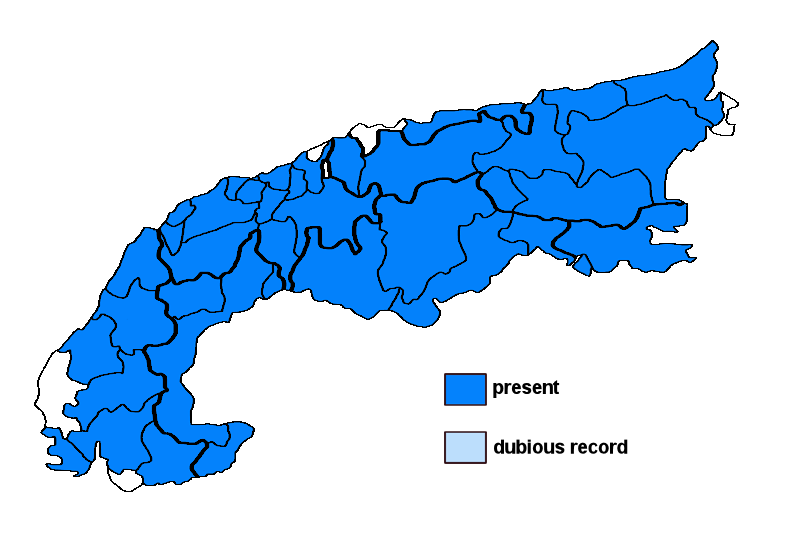Usnea dasopoga (Ach.) Nyl.
Syn.: Usnea barbata (L.) F.H. Wigg. var. dasopoga (Ach.) Fr., Usnea bicolor (Motyka) Bystrek, Usnea capillaris Motyka, Usnea dasopoga (Ach.) Nyl., Usnea dasopoga (Ach.) Nyl. subsp. bicolor Motyka, Usnea dasopoga (Ach.) Nyl. subsp. melanopoga Motyka, Usnea dasopoga (Ach.) Nyl. subsp. stramineola Motyka, Usnea dasopoga (Ach.) Nyl. subsp. tuberculata Motyka, Usnea diplotypus Vain., Usnea fibrillosa Motyka, Usnea filipendula Stirt., Usnea filipendula Stirt. var. capillaris (Motyka) Clauzade & Cl. Roux, Usnea flagellata Motyka, Usnea hirtella (Arnold) Motyka, Usnea implexa Motyka nom.illeg. non Hoffm., Usnea melanopoga (Motyka) Bystrek, Usnea meylanii Motyka, Usnea muricata Motyka, Usnea plicata (L.) F.H. Wigg. var. dasopoga Ach., Usnea saxicola Anders, Usnea spuria (Motyka) Bystrek, Usnea stramineola (Motyka) Bystrek, Usnea sublaxa Vain., Usnea subscabrata (Vain.) Motyka, Usnea tuberculata (Motyka) Bystrek
Lichenised.
Substrate: bark, lignum
Altitudinal range: from the submediterranean/colline belt (potential vegetation: mixed deciduous forests dominated by Quercus and Carpinus) to the subalpine belt (potential vegetation: open, taiga-like forests dominated by Larix decidua and/or Pinus cembra and Rhododendron)
Note: a variable species, most common in humid montane deciduous forests with frequent fog, both on branches and on boles; U. diplotypus s.str. corresponds to short morphotypes of U. dasopoga; widespread throughout the Alps.
Austria: Vorarlberg; Tirol; Salzburg; Kärnten; Steiermark; Oberösterreich; Niederösterreich (incl. Wien); Germany: Oberbayern; Switzerland: Bern; Fribourg; Glarus; Graubünden; Luzern; St. Gallen; Schwyz; Ticino; Uri; Unterwalden; Vaud; Valais; France: Alpes-de-Haute-Provence; Haute-Alpes; Alpes-Maritimes; Isère; Savoie; Haute-Savoie; Vaucluse; Italy: Friuli; Veneto; Trentino Alto Adige; Lombardia; Piemonte; Valle d'Aosta; Liguria; Slovenia: Alpine and Pre-Alpine Slovenia; Trnovsky Gozd;





